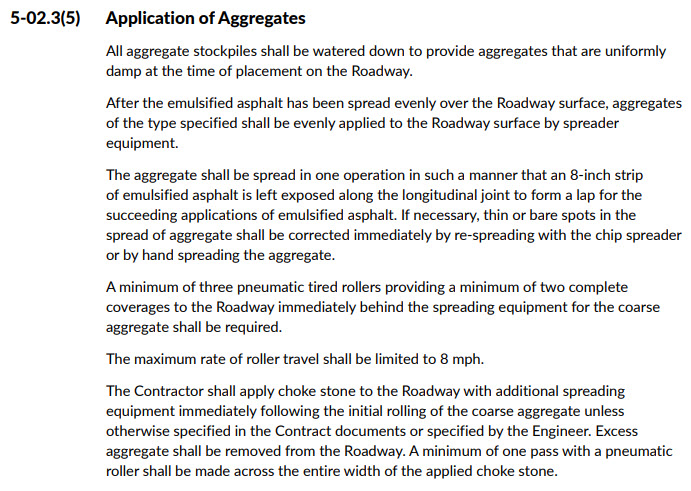A method specification outlines a specific materials selection and construction operation process to be followed in providing a product. In the past, many construction specifications were written in this manner. A contractor would be told what type of material to produce, what equipment to use and in what manner it was to be used in building a structure. In its strictest sense, only the final form of the structure can be stipulated (for instance, the thickness of the pavement layers). This type of specification allows for a greater degree of competition than the proprietary product specification, but as long as the structure is built according to the materials and methods stipulated, the agency bears the responsibility for the performance.
Figure 1 is an example of a method specification.

Although widely used, method specifications have several key disadvantages. First, they tend to stifle contractor innovation. Since a contractor’s only motivation is instructional compliance, there is virtually no incentive to develop better, more efficient construction methods. Second, since they are not statistically based and 100 percent compliance is usually not possible, method specifications usually required “substantial compliance,” a purposely vague and undefined term that can lead to disputes. Finally, spot checks of material quality, which are often used in method specifications, do not reflect overall material quality because they are taken from subjectively determined non-random locations. Since they are not random, these spot checks have no statistical validity and therefore do not reflect overall material quality.
Despite their flaws, method specifications are still widely used on the local agency level (e.g., counties, small cities, towns, etc.). In general, this is because they are familiar, straightforward to write and can be implemented with minimal agency involvement. Local agencies often lack the expertise and resources required to use statistical specifications or warranties.
